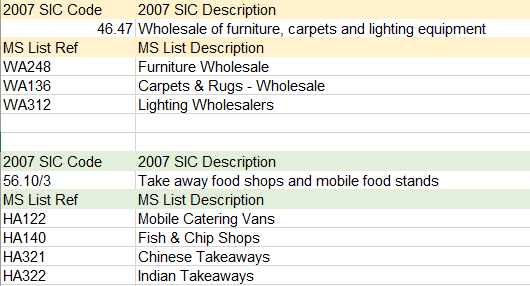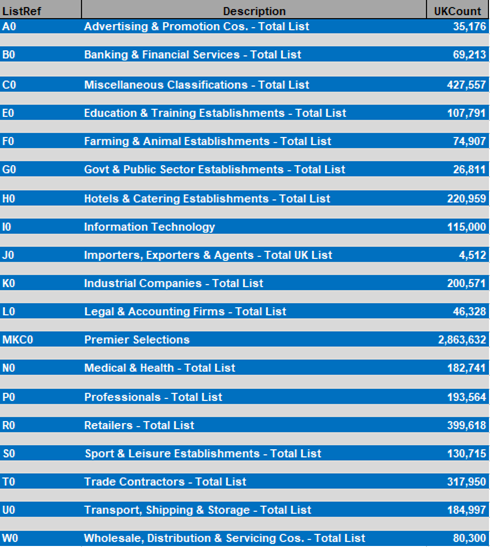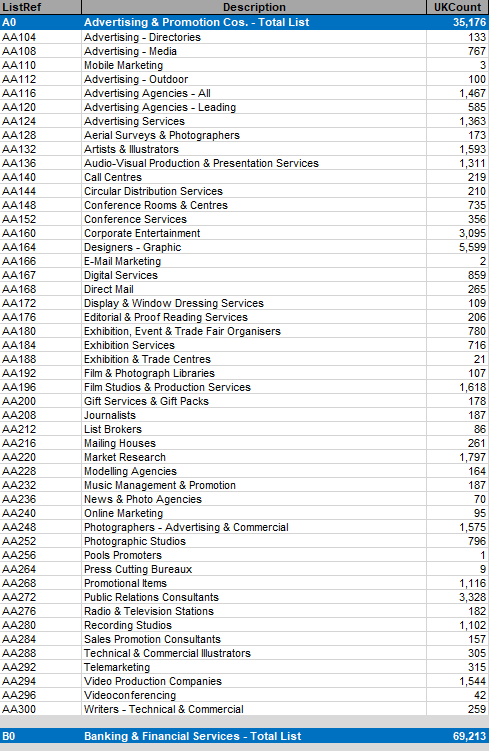What is a SIC code?
United Kingdom Standard Industrial Classification of Economic Activities – or UK SIC – is a system used by Companies House to classify businesses using a five-digit code specific to their industry.
Its purpose is to provide a uniform way of presenting business information and was originally used by the government to differentiate businesses and sectors, analyse profits across industries, and understand economic performance.
UK SIC codes are split into trade groups – Agriculture, Information Technology, Mining, Construction etc – and more detailed classifications are given to businesses within each trade group to define their type of economic activity.
Since being introduced in 1948, UK SIC codes have undergone a number of updates, the most recent being in 2007, to allow the system to adapt to industry changes and provide more detail into individual market sectors.
Every registered company has a SIC code.
As of 2016, at the moment of incorporation, businesses must provide at least one SIC code to describe what their business does – even if it is inactive or not trading. If the business cannot be defined to one specific industry, there is the option to choose up to four SIC codes, which can be updated later.
From a marketing perspective, you might be thinking: “Excellent – let’s use SIC codes to identify potential business prospects and build our marketing lists that way.”
But while SIC codes do make it easier for you to find businesses to target, they are typically far too broad and don’t give the level of precision that we can provide with our targeted industry lists.
Your targeting is only as good as your data
As an award-winning B2B data provider, in addition to providing information on companies registered with Companies House, we can also provide information on non-registered companies, like sole traders and partnerships – which you won’t find on Companies House.
We compile and blend data from the top five UK data sources, not just Companies House, and apply our own unique industry codes across all registered companies, sole traders and partnerships, providing further detail and depth to your targeting.
SIC codes are only a general resource
The fact is, new markets emerge every day and, despite the updating of the UK SIC, the system often fails to provide accurate classifications for new markets and is still skewed towards the manufacturing industry. In an economy that is predominantly service-led, this poses a problem for new businesses looking to classify their activities.
Considering that UK SIC codes were last updated more than a decade ago, your ability to find and target the right industries using this system is severely limited.
Our B2B data lists are updated on a monthly basis and we add new market sectors on a far more regular basis than the UK SIC system. We also use our own unique industry codes to classify registered and non-registered companies, meaning the information you get from us is accurate, highly targeted and up-to-date.
An example showcasing this is detailed below.
As you can see, the current UK SIC system combines businesses in the furniture, carpets and lighting equipment wholesale markets under one umbrella, whereas the Marketscan industry classification system segments them and assigns them a specific list reference for granularity.
Similarly, you can also see in the above example that the current UK SIC system combines takeaway food shops and mobile food stands under one code, whereas our system breaks them down into individual vans, shops and takeaways and, once again, have a specific list reference number for far greater accuracy.
The result is that with our lists, you can filter down to your target market with greater precision, allowing you to find the businesses you are looking for.
Please see the next screenshot below.
This is a screenshot from our ‘lite’ data planner. It shows the major groupings of industries – designed for superior selection capability – that we can target. We can then drill down further into these industries to view all the sub sectors. For example, if we click into Advertising & Promotion, we have…
All of this can be used to understand the makeup of your customer base – or help to identify the industries you wish to target. By segmenting your audience, you can begin to refine your campaigns – ultimately leading to better results.
Quality data leads to quality results
SIC codes were never intended to be a marketing resource – they were developed to allow people (particularly accountants, auditors, authorities and analysts) to differentiate businesses and sectors, analyse profits across industries, and understand economic performance.
Marketscan’s data lists and unique industry codes, however, allow you to be far more targeted, ensuring your activities are tailored to the right people.
Remember, your campaigns are only as good as the data you use – so choose a B2B data provider that can deliver the high-quality data your campaigns need.
Find out more about Marketscan’s B2B data lists and how we can help you to improve your targeting and campaigns.



